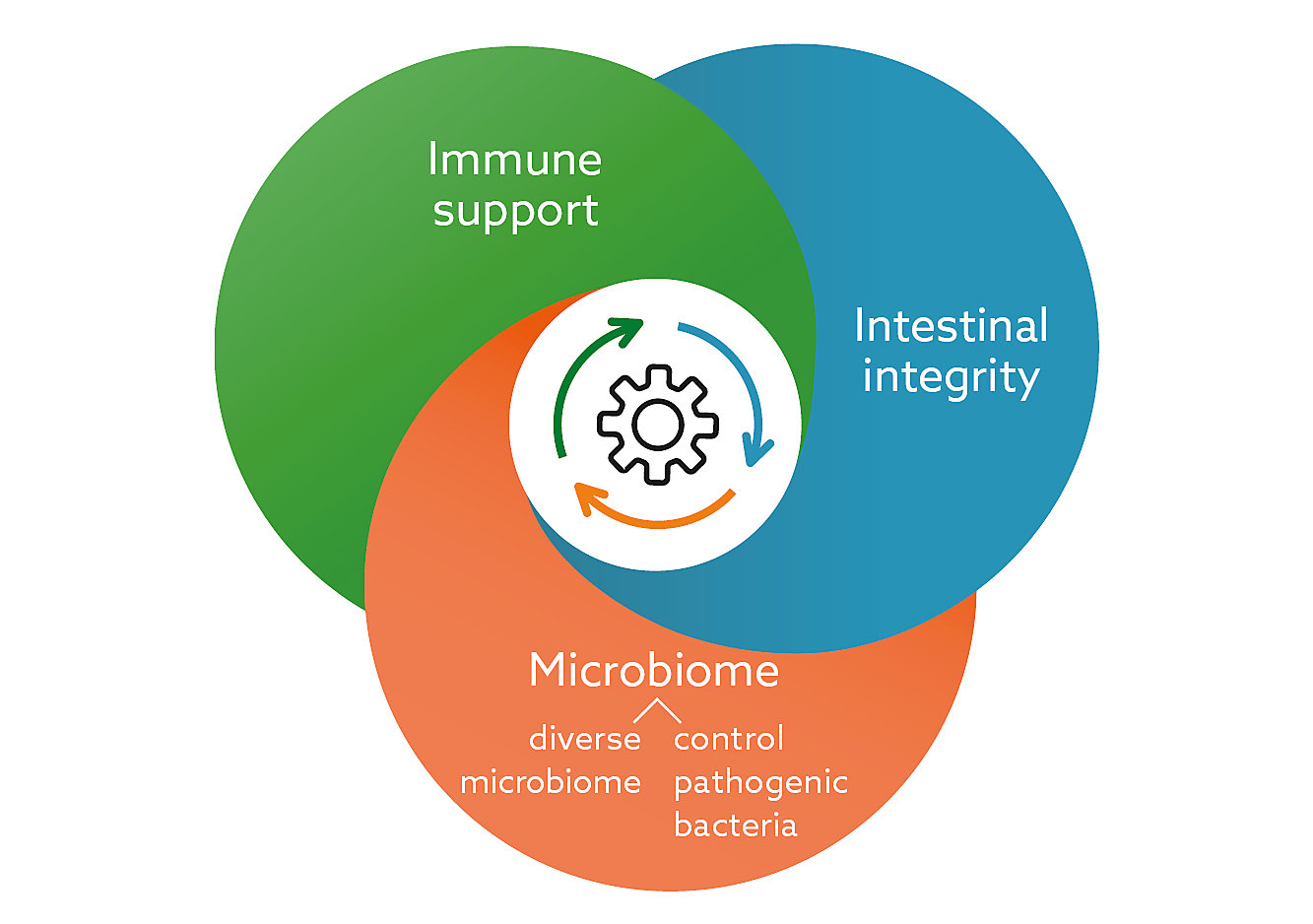Zinc oxide has demonstrated benefits: antimicrobial effects, enzyme secretion, and digestibility enhancement, improved intestinal morphology, antioxidant effects, and immune system priming. As such, we propose solutions that can be tailored to your specific needs on the farm:
1. Microbiome effects
Zinc supports the stability of the intestinal microbiome and increases its diversity. To replace zinc oxide, there are alternative solutions available to enrich the microbiome. These include using probiotics such as CLOSTAT. CLOSTAT is an active microbial that contains a unique, patented strain of Bacillus subtilis PB6. PB6 attacks and kills Clostridia and other pathogenic bacteria, which can negatively impact the gastrointestinal tract.
Our solution: In our zinc oxide-replacement trial CLOSTAT (together with ButiPEARL and Formyl) succeed in fully replacing zinc oxide, without any performance loss and with equivalent health results.
Read More in our Technical Literature:
The benefits of zinc oxide replacement in Pre-starter and Starter diets for piglets
2. Antimicrobial effects
Zinc oxide has antimicrobial effects that help reduce enteric gram-negative infections such as E. Coli and Salmonella. Although zinc oxide’s mode of action may not only be a direct antimicrobial effect, controlling the major enteric pathogens during this critical and transitional period is crucial for successful weaning.
Our solution: an option for Enterobacteriaceae control is Formyl or Formaxol. We have seen that enteric gram-negative bacteria mainly reside in the pig’s lower gut. Hence, microencapsulation technology allows Formyl’s active ingredients to reach the lower gut and thereby effectively control enteric pathogens.
3. Improved intestinal morphology
Zinc helps to maintain and promote optimal gastrointestinal tract functioning. Several studies have shown that pharmacological levels of zinc oxide increase enterocytes proliferation and villi height to crypt depth ratio. Zinc oxide also improves tight-junction expression, which is indicative of reduced intestinal permeability, and better intestinal integrity. Initially thought to have an antimicrobial effect, zinc oxide has proven to inhibit bacterial adhesion to cells, preventing the disruption of the intestinal tight-junctions.
Our solution: An option to preserve intestinal integrity with the use of calcium butyrate using ButiPEARL.
Read More in our Technical Literature
4. Immune System Modulation
Zinc oxide has been shown to reduce the expression of several pro-inflammatory cytokines. It upregulates the transcription of the anti-inflammatory cytokine TGF-β and downregulates genes involved in the innate immune response. Several studies have also proven the same immune-modulatory effect on intestinal inflammation when supplementing piglets with pharmacological levels of zinc oxide. Another study from Ou et al., 2017 showed that zinc oxide could reduce the expression of the cytokine stem cell factor (SCF), leading to mast cell reductions and less histamine release. Histamine is a key molecule for the pathogenesis of diarrhea and inflammation in the intestine.
Our solution: Another strategy besides using zinc oxide is the use of algae beta-glucan, such as Aleta.
To ensure a smooth transition at weaning, without relying on high doses of zinc oxide, we need a holistic approach. This is the approach we use to increase piglet resilience. Challenging post-weaning conditions such as diet and immunological changes, stress, and different environments to which piglets are exposed, favor the intestinal growth of bacteria associated with diarrhea making it crucial to develop a plan of action that reduces the pathogenic load.


